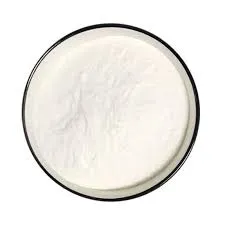
Tet . 30, 2024 23:18 Back to list
how to dissolve hydroxyethyl cellulose
How to Dissolve Hydroxyethyl Cellulose
Hydroxyethyl cellulose (HEC) is a non-ionic, water-soluble polymer derived from cellulose. It is widely used in various industries, including pharmaceuticals, cosmetics, and construction, due to its thickening, gelling, and film-forming properties. Dissolving HEC correctly is crucial for achieving the desired viscosity and performance in applications. Here’s a step-by-step guide on how to effectively dissolve hydroxyethyl cellulose.
Step 1 Select the Right Grade
Before dissolving HEC, it’s essential to choose the appropriate grade based on your application. HEC comes in various molecular weights and viscosities, which influence how it dissolves in water. Generally, lower molecular weight HEC dissolves more easily compared to higher molecular weight grades.
Step 2 Prepare the Water
The temperature and quality of water play a significant role in dissolving HEC. Using warm or hot water (typically between 60-80°C) can speed up the dissolution process. Distilled or deionized water is preferable to avoid impurities that might affect the final product.
Step 3 Gradual Addition
To ensure uniform dispersion of HEC, it’s critical to add the polymer gradually to the water rather than dumping it all at once. Stirring continuously while adding HEC helps prevent clumping and ensures an even distribution within the liquid.
how to dissolve hydroxyethyl cellulose

Step 4 Stirring and Hydration
Once HEC is added, continue stirring vigorously. A mechanical mixer or high-shear mixer can enhance the efficiency of this process. It generally takes about 15 to 30 minutes for HEC to fully hydrate and dissolve. Be patient, as inadequate stirring may result in lumps and incomplete dissolution.
Step 5 Cooling and Adjustment
After the HEC has completely dissolved, allow the mixture to cool to room temperature. You can also adjust the viscosity by adding more water or HEC, depending on your requirements. Ensure thorough mixing during this adjustment phase.
Step 6 Storage
If you are not using the dissolved HEC immediately, store it in a sealed container to prevent evaporation and contamination. Keep it in a cool, dry place to maintain its properties over time.
By following these steps, you can effectively dissolve hydroxyethyl cellulose for use in various applications, ensuring optimal performance and desired characteristics. Whether in a cosmetic formulation or a construction material, proper dissolution of HEC is key to achieving the best results.
-
What is HPMC?
NewsJun.06,2025
-
Understanding Redispersible Powder: The Future of Construction Materials
NewsJun.06,2025
-
Understanding RDP Powder: The Ultimate Solution for Your Construction Needs
NewsJun.06,2025
-
Pure HPMC: The Ideal Solution for Modern Construction and Building Materials
NewsJun.06,2025
-
Methyl Hydroxyethyl Cellulose: A Versatile Chemical Compound
NewsJun.06,2025
-
Hydroxyethyl Cellulose Power: The Essential Chemical for Various Industries
NewsJun.06,2025







